






By Anna Houston, a freelance writer specialising in parenting and women’s lifestyle
Christmas is approaching and the pressures are everywhere to make it the most magical time of the year. Bombarded by social media perfection and ads for all the must-have gifts and experiences, it’s easy to feel overwhelmed. Last Christmas, having just moved house, we skipped expensive outings and planned one special, no-cost (or low-cost) activity each weekend. It became our most memorable Christmas yet - so here are some of the things we did to inspire your own festive season.

Turn writing letters into an afternoon event. Put on a Christmas playlist, serve gingerbread and warm milk and set out stickers, stamps and glitter. It’s a cosy way to spend time together and an easy sneak of their wish list. I also use the same setup with my eldest for writing Christmas cards, making a simple chore feel special.
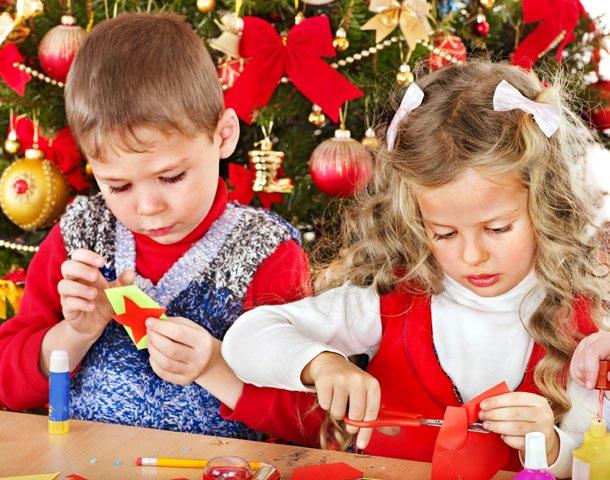
There are endless festive sensory play ideas. One favourite is ‘snow’ made from bicarbonate of soda, cornflour and a splash of water. Hide little trinkets or cutters inside for the children to discover. A quick online search will give you plenty of low-cost activities to keep little hands busy.
Instead of a Christmas Eve box, I create a December box filled with activities rather than toys. It might include a Christmas mug, festive puzzles, craft supplies, stickers or cookie cutters. The aim is to spark connection through playing, creating and making memories together. I also display our Christmas storybooks alongside the box so the children can rediscover old favourites. To add extra magic, the Christmas elves write a note to the children when delivering it at the start of the month!

at dinner create calming moments and encourage conversation. Let the children take turns lighting the candle (with your help, of course!).

Skip pricey light trails and explore local neighbourhoods known for their light displays. Wrap up warm and take a walk together or pack blankets and hot chocolate for a cosy car tour one evening. Many towns also host free light switch-on events with parades and performances. These are often just as enchanting as ticketed attractions but far more budget-friendly.
Festive gatherings
If you don’t have a fire pit or chiminea, meet friends who do! Gather round with mugs of hot chocolate and marshmallows or s’mores. We even popped the children’s letters to Santa into the flames so the smoke could magically ‘deliver’ them to the North Pole, also saving a trip to the postbox. The flicker of the fire, crisp air and excited chatter made for a wonderfully festive activity.

Pre-made gingerbread shapes, icing and sprinkles make for an easy, low-effort afternoon. They are readily available in any supermarket and the baking aisles have lots of festive sprinkles to choose from. For older kids, a decorating gingerbread house party with friends is always a winner. If gingerbread isn’t your thing, try making mince pies with ready-rolled pastry and jarred mincemeat as an alternative.
Little traditions
Each year, we choose a new bauble for the tree. Opening the decoration box becomes a trip down memory lane as we recall where each one came from. You could also make your own decorations together - over time, you’ll create a tree full of memories.

Editor Linda Stone info@familiesmagazine.co.uk
020 8241 0423
Next issue: January/February Cover image: www.depositphotos.com
Follow us on social media
www.facebook.com/FamiliesUK www.instagram.com
This product is made of material from well-managed, FSC®certified forests and other controlled sources.
Are you hunkering down for winter yet? In the busy run up to the end of the year, many of us are too preoccupied to notice the changing seasons but it’s definitely time to settle fully into your winter wardrobe and get out those hats and scarves.
If you generally spend November chasing your tail to get ahead of Christmas preparations, then don’t look past our kids’ gift book guide. There are some extra-special, fabulously collectable books that you can gift your children this year, destined to become titles they will revisit again and again. If you’re on the lookout for toys, don’t forget to apply for some in our Great Christmas Toy Giveaway too!
Meanwhile, discover ways of supporting a child with one or more neurodivergences, find out why your child’s teacher is so tired and take a look at the best educational apps for kids. It’s AntiBullying Week from 10 to 14 November. Every parent dreads bullying but how do you know whether your child is being bullied or just having a bad day? Find out inside.
Finally, if your child’s birthday is approaching, we have some tips from party experts on how to ensure their party runs smoothly (and if your child’s birthday coincides with the Christmas season, we feel your pain!)
July/August issue giveaway winners Congratulations to all our winners. You can find a list at www.bit.ly/JulAug25GiveawayRecipients
Families Magazine is a franchise of Families Print Ltd of 75 Lisbon Avenue, Twickenham, TW2 5HL. Families is a registered trademark of Families Print Ltd. All franchised magazines in the group are independently owned and operated under licence. The contents of Families Magazine is fully protected by copyright and none of the editorial or photographic matter may be reproduced in any form without prior consent of Families Magazine. Every care is taken in the preparation of this magazine but the franchise owner and Families Print Ltd cannot be held responsible for the claims of advertisers, nor for the accuracy of the contents, or any consequence thereof.







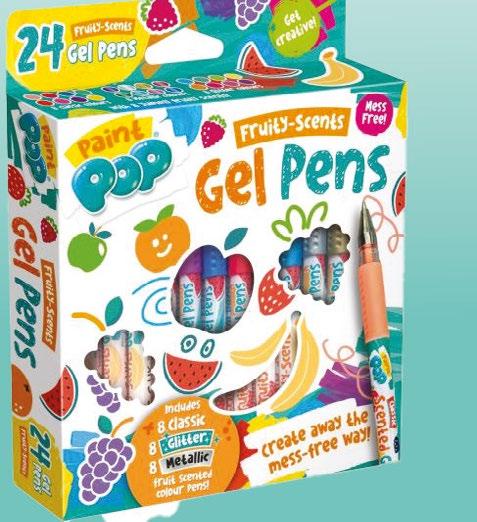

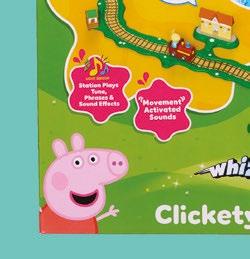

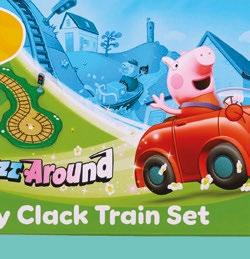



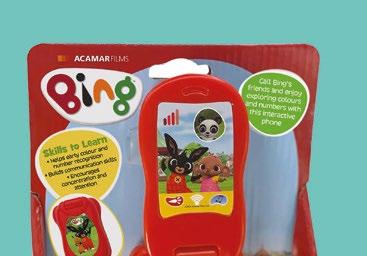






By Zuzu Jordan
When your child’s teacher greets you at pick-up with a weary smile or looks a little drained during a parent’s evening, it’s not because they don’t love what they do. Teaching is a highly rewarding profession but also one of the most demandingemotionally, mentally and physically.
The many hats of a teacher
A teacher’s job doesn’t stop at delivering lessons. In a single day, they may also act as coach, counsellor, nurse, mediator, cheerleader and problem-solver. This constant juggling can be both exhilarating and exhausting.
Planning beyond the classroom
What happens in class is only the tip of the iceberg. Behind every lesson is hours of preparation, marking and adapting plans to meet the needs of different learners. Many teachers work evenings and weekends, often unpaid, to bring their students the best possible experience.
Emotional energy
Children don’t just bring their homework to school - they bring their moods, worries and triumphs too. Teachers hold space for all of this. They celebrate the wins, comfort the tears and support children through challenges. On top of this, teachers are also responsible for safeguarding, which can involve sensitive or upsetting situations and requires immense emotional energy.
The pace of the school day
Imagine being ‘on stage’ for six straight hours with thirty children looking to you for guidance, answers and structure. Few jobs
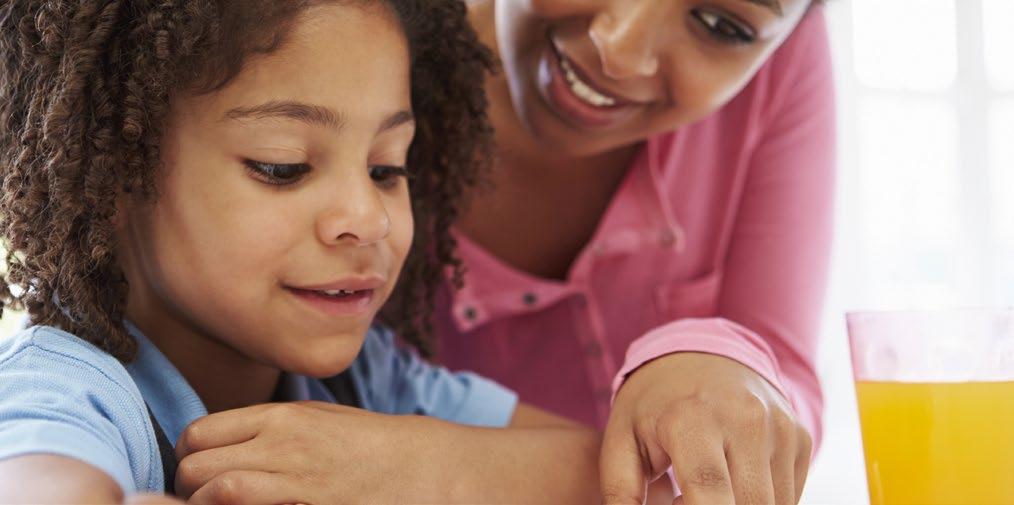
One of the best ways parents can support teachers is by reinforcing school expectations at home. Children thrive when they see consistency between classroom and family life because it helps them understand that learning, respect and responsibility don’t stop when the school bell rings.
Simple routines make a big difference. Encouraging regular reading, setting aside time for homework and ensuring children arrive both on time and prepared each morning all show that school is a priority. Just as importantly, backing up teachers on behaviour expectations, like kindness, listening and perseverance, helps children see these values as part of everyday life, not just ‘rules for school.’
Of course, parents don’t need to recreate the classroom at home. It’s about building habits that support learning and showing children that you and their teacher are a team. When children see that the adults in their lives are working together, they feel secure, motivated and ready to succeed.
Backing up school expectations isn’t just about helping teachers; it’s about helping children flourish.

require such focus and authority without pause. Even lunch breaks are often spent supervising playgrounds or running clubs.
Why it matters
A tired teacher is still a dedicated teacher. Their fatigue reflects how much they give of themselves every day. When we recognise the demands of the job, we can better appreciate the effort behind every worksheet, every encouraging word and every patient explanation.
How families can help
The best gift parents can give teachers is partnership. Kind words of thanks, support with homework routines or volunteering for a class activity go a long way. Most of all, valuing their commitment can help lighten the emotional load.
So next time you notice your child’s teacher looking tired, remember it’s not a lack of enthusiasm. It’s the natural result of pouring heart, energy and care into shaping the next generation.
Zuzu is a Mastery for Maths Specialist who has taught primary for eighteen years and is Director of Arnett International. For FREE resources and tips, find her on Instagram @edumate_uk

Schools thrive when families and teachers work together and one of the most valuable ways parents can offer support is by getting involved in the school community. Even small contributions of time and energy can make a big difference, not just to teachers but to children too.
Helping out doesn’t have to mean a big commitment. It might be lending a hand on a school trip, reading with children once a week or running a stall at the summer fair. These acts ease the workload for staff and create special memories for pupils. For those with less flexible schedules, offering occasional help with resources at home, like cutting, labelling or preparing craft materials, can be just as valuable.
Beyond practical support, active participation sends children a powerful message: that their school is important and worth your time. It builds a sense of community where families feel connected, teachers feel appreciated and children feel proud. When parents join in, schools become stronger, warmer places and everyone benefits.
By Erin Miller
It is completely natural to feel worried or upset if your child comes home from school distressed or mentions problems with other children. But how can you tell whether the incident was a normal day-to-day disagreement or something more serious? And what kind of response should you expect from your child’s school?
A good starting point is to look at the school’s Behaviour Policy. Legally required, it must include measures to prevent bullying. It is highly likely that your child’s primary school will draw on the Department for Education (DfE) definition of bullying, which is: ‘behaviour by an individual or group, repeated over time, that intentionally hurts another individual or group either physically or emotionally.’
This definition is widely adopted across UK schools and forms the basis of most anti-bullying policies. Many schools and organisations such as the Anti-Bullying Alliance, expand on this by highlighting that bullying often involves a power imbalance, where the person being targeted finds it difficult to defend themselves.
To determine whether your child is experiencing bullying, rather than a one-off conflict, ask open-ended, thoughtful questions that encourage them to share key details. Focus on understanding whether the behaviour is repeated, intentional and involves a power imbalance
Bullying behaviour typically happens more than once, is generally intentional and leaves the child feeling afraid, isolated or powerless.
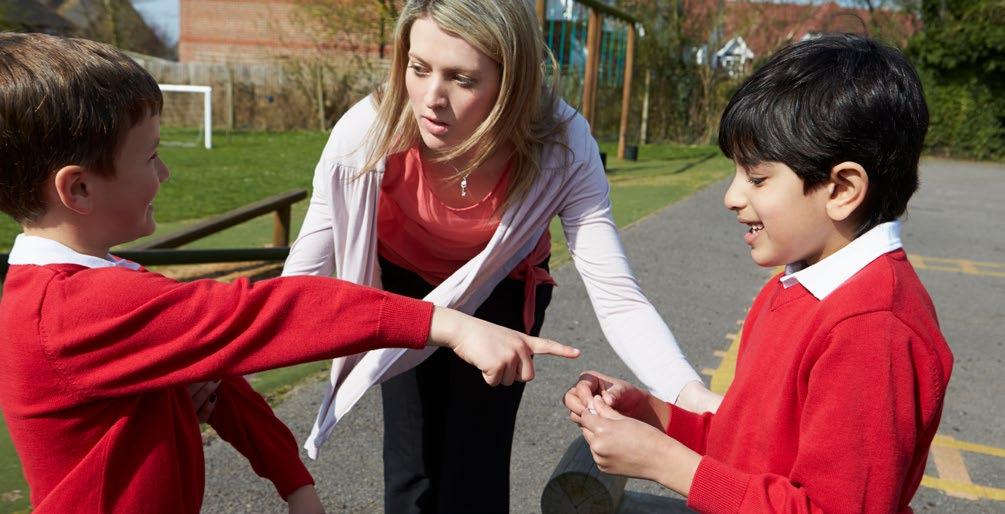
Young children are still learning how to manage emotions and navigate relationships, so some conflict is a natural and even healthy part of growing up.
Normal conflict between children tends to be mutual. It might arise from disagreements over games, sharing or accidental hurt feelings. Typically, both parties play a role in the dispute and it is usually short-lived.
A key sign of healthy conflict is that it resolves relatively quickly, either on its own or with minimal adult support. The children involved are generally able to move forward without lingering fear, resentment or ongoing tension. Another positive indicator is when both children feel safe enough to express their feelings and can eventually compromise or repair the relationship.
Talk to your child about conflicts that they have. Try to foster valuable skills, such as problem-solving, active listening and apologising. For example, encourage your child to say how they feel (‘I felt upset when you didn’t let me play’) and to listen to the other child’s perspective.

When speaking with your child about an incident which you suspect may be part of a pattern of bullying, avoid leading questions or adding your own assumptions, as children often try to confirm what adults suggest.
Ask neutral, non-judgemental questions that bring out their experiences in their own words. For instance: ‘Where else do you see Layla at school?’ rather than: ‘Does Layla do this to other children?’ This approach helps ensure you’re gathering accurate information without unintentionally influencing your child’s responses.
If you believe the behaviour your child is experiencing meets the definition of bullying, it’s appropriate to write to your child’s class teacher outlining your concerns. Describe the behaviour clearly and factually, explaining how it appears to be repeated, intentional and involves a power imbalance.
As a teacher, I strongly recommend putting this in writing as schools rely on detailed accounts from all parties to investigate allegations thoroughly. Specific examples help teachers respond effectively.
Erin Miller is a teacher with a keen interest in how research can be used in the classroom to improve learning.

Ideally, your child will tell you if they are having problems at school but this is not always the case. Watch for changes in mood or behaviour, disrupted sleep or eating, reluctance to go to school or a sudden drop in confidence.
Other indicators include unexplained injuries, damaged or missing belongings, frequent headaches or stomach aches without a clear reason, a loss of interest in friends, schoolwork or favourite activities. These indicators might include negative comments about themselves such as ‘nobody likes me.’
If you are unsure, speak with your child’s teacher or the headteacher if appropriate. School staff often have a broader perspective on social dynamics and can help build a clearer understanding of the situation.
Not all serious conflict meets the defined parameters of bullying. However, it can still be harmful. If your child reports anything particularly serious, such as physical harm, threats or ongoing emotional distress, raise it with the school immediately so that the appropriate support and action can be put in place to avoid the conflict escalating further.
By Usha Patel
Watching our children reach their developmental milestones is a source of wonder and delight. From when your baby gets their first tooth, learns to crawl and walk and then becomes a young child ready to start school, there are many moments full of joy. However, when parents notice that their child is not meeting the necessary development milestones, excitement and anticipation can turn to fear and cause many sleepless nights.
If the situation doesn’t improve, worry becomes constant and trying to obtain official recognition of your child’s challenges is a long, uphill struggle, often accompanied by months (or years) of waiting and anxiety.
Waiting for a diagnosis
Some neurodivergent conditions, including Autism Spectrum Disorder, can be diagnosed very early, before your child starts school. Other conditions, such as Developmental Co-ordination Disorder (Dyspraxia), can be diagnosed once a child starts school, while Dyslexia cannot be diagnosed until after age 8.
When conditions are jumbled up
The term co-morbidity is used when there is no clear-cut single diagnosis and when a child has many co-existing and differing challenges. If you suspect co-morbidity exists, it’s common and understandable to spend time doing you own research online; you may subsequently discover that your child ticks some of the boxes for all the conditions you are looking at.
Does my child have ADHD?
It seems more and more children are being diagnosed with ADHD. The outward symptoms of ADHD can be a hyperactive child with poor attention OR an inattentive child with poor attention. Why are so many children being diagnosed?
This may be because, regardless of a formal diagnosis, it seems that poor attention (either in the inattentive or hyperactive state) often co-exists with most forms of neurodivergence. At my practice, I see children with Autism Spectrum Disorder (ASD) combined with ADHD; Dyspraxia combined with ADHD; Dyslexia combined with ADHD, Auditory Processing Disorder and ADHD. It’s common and in fact, expected in most cases, that if a child cannot concentrate because they find reading, writing, talking, moving or any number of activities challenging, they will be unable to learn with ease and will definitely come across as having the ADHD symptom of inattention.
It can be more helpful to think not about the category your child falls into but what they need to assist their development.

How can your child’s developmental skills be facilitated?
A good starting point is the building blocks of development, the Primitive Reflexes.
Assessing Primitive Reflexes leads a therapist such as myself to test certain things; for instance whether a child walks on their toes - not something that may necessarily seem important to their teacher. Toe walking would indicate the need to check for poor balance, an understanding of left and right, visual tracking, whether a child finds sitting at a desk challenging and how well they process what they hear.
Primitive Reflexes exist at the start of a baby’s life. They are a transition phase from the zero gravity world within the womb to the outside world of gravity and are essential to help a baby thrive. Sometimes reflexes are coupled. Examples of coupled Primitive Reflexes are between the hand and the mouth - while a baby is feeding, their hand opens and shuts. Primitive Reflexes are automatic, require no thinking and, in most children, are automatically replaced by Primitive Reflex Integration. In some children though, this normal developmental phase doesn’t take place. For instance, a school-age child with unintegrated Primitive Reflexes may poke out their tongue as they write.
Having reflexes in this unintegrated state is exhausting for your child; it prevents development and hinders academic progress. In this state, they cannot concentrate for long periods, which may be why they show symptoms of ADHD. Primitive Reflex Integration is a common-sense developmental approach to dealing with complex neurodivergency-related problems, as it starts at the very beginning.
When children undergo Reflex Integration Therapy, taking the example of the coupled Primitive Reflex between the hand and mouth, when a simple test is done on the child’s hand, their mouth moves. Once the special reflex integration exercises are implemented, the hindering connection recedes. The child finds writing easier and can write for longer periods without feeling reluctant or overwhelmed.
Usha Patel is a Neurocognitive Therapist at Raviv Practice London. Visit www.ravivpracticelondon.co.uk for advice on any of these issues.
When a child suffers with repeated episodes or constant anxiety over a prolonged period, sometimes from birth, they can develop stress responses that are hard-wired, described as trauma.
Professionals are learning about trauma and how best to help those children with neurodivergent conditions who also suffer from additional trauma.
Dr Stephen Porges is an American psychologist, a professor of psychiatry at the University of North Carolina and the founding director of the Kinsey Institute Traumatic Stress Research Consortium at Indiana University. His groundbreaking research focuses on how the autonomic nervous system regulates responses to trauma and offers a clear understanding of where trauma responses originate within the nervous system.

His work on the Polyvagal Theory, which explains how the body responds to safety and threat, is a huge scientific breakthrough which shines light on how to find answers for a child who is not yet using language to express themselves, due to a co-existing condition such as Autism or because they are too young and can’t yet talk.

When a child has symptoms of Autism
Autism is an umbrella term for many defined, co-existing symptoms, typically including poor language skills, weak motor co-ordination, auditory processing and social interaction challenges.
When working with Primitive Reflexes and Autism, symptoms that often present are: eye tracking, head movement, toe walking, hand grasp, an inability to easily use a body part on the other side of the body and difficulties with right-sided brain functions.
As Autism is a neurological condition, integrating Primitive Reflexes does not provide a cure. However, improved eye coordination and auditory skills lead to more eye contact between your child and others and that, in turn, can improve verbal and non-verbal communication. Your child may seem more able to co-operate, less disregulated and more grounded.
Importantly, when your child is going through Primitive Reflex Integration, you are proactively facilitating progressive exercises at home, contributing to the incremental changes you see daily or weekly, on a journey that builds and makes permanent neural connections between your child’s brain and body.
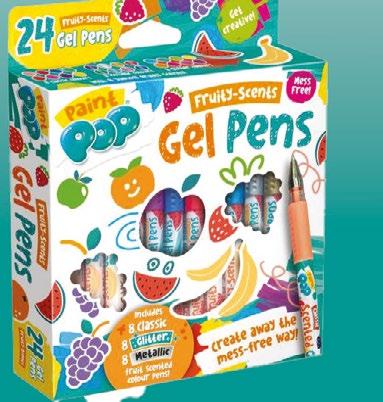








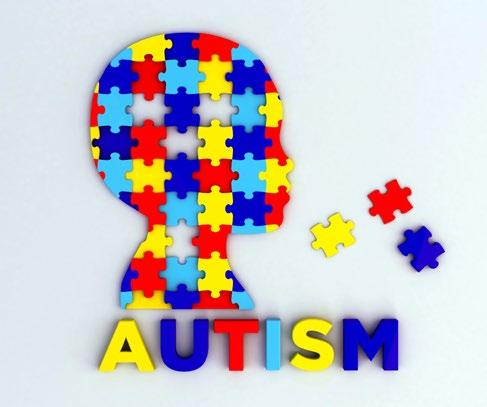
The four groups identified are:
A major study has uncovered four distinct subtypes of Autism, offering new hope for more accurate diagnosis and personalised treatment. Published in Nature Genetics, the research analysed data from over five thousand children, combining developmental milestones, behaviour and genetics.
Social and Behavioural Challenges (37%) – core Autism traits, with higher rates of ADHD, anxiety or OCD.
Mixed ASD with Developmental Delay (19%) – later milestones but fewer psychiatric issues, linked to both inherited and new genetic variants.
Moderate Challenges (34%) – milder traits, timely development and minimal additional conditions.
Broadly Affected (10%) – severe difficulties across multiple domains, including language, development and psychiatric concerns.
Scientists say these subtypes suggest Autism is not one condition but several overlapping biological pathways. The discovery could transform how it is understood, paving the way for more targeted therapies and tailored support for children and families.
More info: www.sciencedaily.com

A new centre has been launched by the National Institute of Teaching (NIoT) to help schools tackle online misinformation, disinformation and conspiracy theories. Funded by the Pears Foundation, the initiative aims to give teachers and school leaders the tools to support children navigating today’s complex digital world.
The programme offers training, practical classroom resources, online learning modules and public engagement campaigns to strengthen media literacy and critical thinking among students. Pip Sanderson, NIoT’s Director of Teacher Development, said the centre will help teachers guide children safely online.
NIoT Chief Executive Melanie Renowden emphasised that young people are increasingly exposed to false information and that schools play a key role in protecting them.
The centre was shaped by feedback from teachers who say they urgently need support. Its goal is to build a generation of digitally savvy, critical thinkers.
By John Rolfe
As the writer Rita Mae Brown reminds us: ‘language is a roadmap of a culture. It tells you where its people come from and where they are going.’
Languages and cultural heritage offer rich reflections of family and community and it is important that all families understand and celebrate their roots and cultural history. Such sharing develops a strong sense of identity, self-esteem and wider family bonds, providing a key support for young people to better understand and embrace their unique identity.
All families have their own ‘culture’ and their own ways of acting and feeling; language is central to that culture. However, as the speech therapist Catherine Pape highlighted: ‘the majority of the world’s population speak more than one language; raising your child in two or more languages will help the development of their brain, their self-confidence, well-being and learning skills and also means they’ll be better equipped to learn other languages later in life.’
When teaching our children about their home language and cultural heritage there might be some conflict with the traditions of the society they are growing up in.
Studying, living and working in the UK shapes many of our values and lifestyle choices; by celebrating the culture you see as important in your family home in the way you cook, dress and converse means everyone sharing and valuing different cultures and further developing a richer and broader life. Your child will most probably receive a wide exposure to English at school so your family home might well be the only place your child hears their home language. It’s vital to carry on using it!
It’s great to start these conversations with your children from infancy. As Catherine explains: ‘their brains are wired to pick up more than one language and hearing multiple languages is not confusing.’ This early family approach to language and culture supports stronger family bonds and develops important coping skills around cultural heritage and maintaining its important legacy.

Chat and read stories in your language to your children at home.
Look for and sign up to language and traditional art classes from your cultural heritage that you can join together.
Celebrate holidays and special occasions that are meaningful to your own culture, cooking and sharing traditional ingredients and recipes.
Share and celebrate stories from your family history and visit places together that are important parts of your culture.

It’s also important to encourage your child’s school to celebrate the value of different languages and cultures. Many schools use their international partnerships to bring a global dimension to their teaching, ensuring that children develop the wider skills and understanding to take their place in the world. Schools and families can be significant partners across a wide range of cultures and language, offering an important tool for cultural transmission.
Parent Governors are key stakeholders in this partnership so do also support them in this work by bringing your own rich insights to the role. Sharing cultural experiences and celebrations help families connect with their wider community which fosters understanding and reduces prejudice.
The need for this is summed up beautifully in a quote from the author Marshall McLuhan displayed in one primary school: ‘There are no passengers on planet earth, we are all crew.’
All families are key to that crucial ‘crew’ of society in helping young people understand and value different perspectives, diversity and respect; hugely important in our multicultural world.
Every family everywhere has a role to play to ensure that their home language and cultural traditions are respected and support their children to be equipped to become confident, enquiring, motivated and empowered global citizens.
John Rolfe (MBE) is Community and Partnerships Manager, at Global School Alliance (www.globalschoolalliance.com) an organisation which unites passionate educationalists from around the world under the common goal of providing global learning for students.

In our increasingly interconnected, global world, teaching and learning languages is more important than ever. Alongside traditional language lessons, the growth in VR, gaming and AI are all providing interactive and immersive, international learning experiences.
As well as the cognitive, confidence and career benefits of learning languages, it’s great for enhancing communication, leadership and intercultural skills and roles.
By Ellie Malt
The first year of parenting? Total chaos. You’re exhausted, winging it and wondering why no one warned you that tiny humans come with so much stuff! No one gets it ‘right’ and looking back, most of us realise we stressed over the wrong things or missed little joys because we were too busy trying to keep it all together.
Here are six confessions from parents who’ve just been there:
The tale of Sophie the Giraffe
‘I splurged on Sophie the Giraffe because apparently, she’s the iconic teething toy. Big mistake. Our dog thought it was her chew toy and won every battle. After a few replacements, I realised babies don’t care about bougie toys. Save your money.’
Talking about the hard stuff
‘Every mum meetup was the same: nap schedules and bedtime routines. Boring. The real breakthroughs happened when I admitted I was struggling. Talking openly about exhaustion and doubt made me feel less alone. Way more useful than another nap hack.’
The spoon and plate saga
‘Starting solids? I spent hours researching the ‘best’ spoon and suction plate. I finally bought a pricey set that was basically useless - the spoon became a teether. Cheap supermarket ones worked way better. Don’t overthink (or overspend) it.’

Here’s the real talk: babies don’t need the latest gadget, the perfect routine or a spotless home. Above all they need you - calm, present and sane(-ish). New parents tend to overstress, while forgetting to look after themselves. If you’re looking to avoid some common pitfalls here are some key points to manifest:
Skip the hype. That fancy teething toy or overpriced weaning set isn’t going to change your life.
Keep it honest Vent to other parents about the hard nightsit’s far more valuable than swapping sleep charts.
Protect your downtime. Take the long shower, enjoy a hot drink or binge-watch a show. You deserve it.
Lower the bar. ‘Good enough’ isn’t a compromise. Your baby doesn’t notice if you skip a vacuum.
Celebrate small wins. Survived a full day? Got a few naps? Made it through bedtime? That’s success.
Parenting is messy, unpredictable and exhausting but realising that ‘good enough’ works will give you the energy to enjoy the ride.

Missing out on easy outings
‘I was so scared outings with our little one would fail that we barely left the house. Looking back, I wish we’d gone to the pub more while our baby was still portable. Those outings would have done wonders for our sanity.’
Rushing through everyday moments
‘Every nap felt like a race to finish chores. I wish I’d taken long showers, sipped hot coffee or just chilled. Laundry never endsbut those little self-care breaks? Priceless.’
Forgetting to take enough photos of OURSELVES
‘I have thousands of baby pics and almost none have me in them. I felt too scruffy or tired to be in front of the camera. Now I regret it - those messy, real-life photos are what my child will treasure one day.’
Feeling like I needed to entertain my baby
‘Now I realise I didn’t need to wave rattles, sing, read or talk full time - she had more than enough to handle just getting used to being in the world.’
Ellie Malt is writer and a mum of two girls living in Surrey.

Rigidity is a common regret for new parents. We fixate on details, fear failure and hold ourselves to impossible standards. Loosening your grip makes everything easier. Babies are surprisingly adaptable and parenting is easier when we let go of wanting perfection.
Go out while you can. Babies sleep through noise better than you expect - cafés, pubs and friends’ houses are fine.
Don’t fear failed plans. A short nap or a messy meal isn’t the end of the world. There’s always tomorrow.
Let chaos in. Messy feeds, unpredictable sleep, piles of laundry - it’s all part of normal life.
Adapt on the fly. Flexibility means you can enjoy moments instead of stressing over what ‘should’ happen.
Laugh at the madness. The more you accept the imperfect, the more fun you’ll have and your baby will pick up on that energy too.
The first year isn’t about control; it’s about adapting, forgiving yourself and realising that imperfect days are often the best ones.

By Sarah Campbell
Looking for the perfect gift for young readers this Christmas? From beautifully illustrated classics to dazzling new releases, here are the most special, collectable children’s books of the season.

Paddington’s Twelve Days of Christmas by Michael Bond & Karen Jankel
Ages 2-4
This delightful hardback is perfect for young readers and Paddington fans alike. Inspired by the classic carol, the Brown family are busy celebrating their Christmas gifts - but Paddington is puzzled when he can’t find the partridge in a pear tree. Ever determined, he sets off to investigate, leading to plenty of festive fun and his very own spectacular Christmas Day surprise. With charming illustrations and Paddington’s trademark mischief, this joyful story is ideal for reading (and singing!) together over the holidays.
The Christmas Contest: An Advent Novel by Maxime Gillio
Ages 5-8

Make the countdown to Christmas truly magical with this ingenious advent novel that the whole family can enjoy together. Santa has a big problem: too many children on the nice list and not enough time to deliver the gifts! His solution? A festive competition to recruit his very first apprentice. Featuring a cast of captivating characters, the North Pole comes alive with excitement as contestants face a series of playful challenges. With twenty four sealed chapters to open day by day, this interactive story introduces a joyous new festive tradition.

The Extremely Embarrassing Life of Lottie Brooks by Katie Kirby
Ages 9-12
Puffin are celebrating their eightyfifth anniversary this year with deluxe clothbound editions of much-loved modern classics, including The Extremely Embarrassing Life of Lottie Brooks. Packed with laugh-out-loud moments, friendship and relatable growing-up struggles, this book celebrates the highs and lows of pre-teen life. Bound in cloth with coloured foils and sprayed edges, this beautifully presented hardback is both a perfect gift and collector’s item, with a brand-new foreword by Nadia Shireen.
Oh Dear, Look What I Got!
by Michael Rosen and Helen Oxenbury
From the legendary creators of We’re Going on a Bear Hunt comes a brandnew rhyming delight that feels like an instant classic. In this playful hardback edition, each trip to the shop brings an unexpected surprise – a carrot turns into a parrot and the fun just keeps building! With Michael Rosen’s witty, read-aloud rhymes and Helen Oxenbury’s joyful illustrations, children will be giggling and guessing what comes next. Perfect for story time, this energetic and hilarious tale brings a final twist to leave little readers smiling.

Ages 2-4
Animal Magic by Michael Morpurgo
Ages 5-8

From one of the nation’s most beloved storytellers comes a beautiful hardback collection of four inspiring and heartwarming modern fables celebrating the bond between people, animals and the natural world. Readers will journey from the banks of the Thames to a seaside railway carriage, through countryside lanes on a bicycle and to a Devon farm where a refugee discovers hope through horses. Told with Michael Morpurgo’s trademark warmth and compassion, Animal Magic is a book to cherish and share.
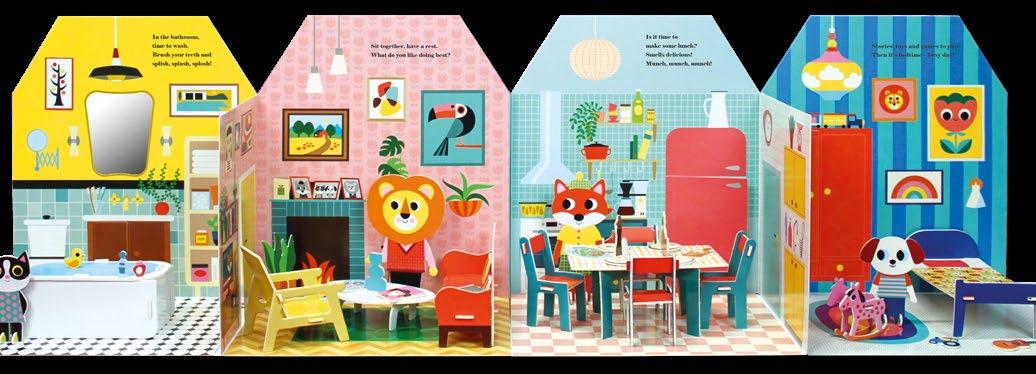
Fold Out + Play Doll’s House Illustrated by Ingela P. Arrhenius
Ages 2-4
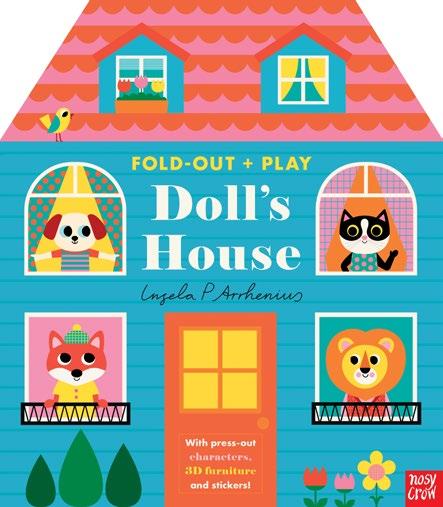
This ingenious interactive board book transforms into a beautifully designed 3D doll’s house for hours of imaginative fun. Children can press out and assemble furniture, stand up the charming characters and use colourful stickers to decorate each room - from kitchen and bathroom to cosy bedroom and living room. Once playtime is over, all the pieces pack in the sturdy built-in drawer, making it perfect for on-the-go adventures. This is a book, a toy and a delightful gift all rolled into one.
This is Not a Small Voice edited by Traci N. Todd
Ages 9-12
This stunning illustrated anthology celebrates the power and beauty of black voices. Featuring over one hundred poems by both classic and contemporary poets - including Maya Angelou, Amanda Gorman, Joseph Coelho and more, this collection introduces children and families to a dazzling range of perspectives, all brought to life with vibrant illustrations. The poems explore hope, struggle, joy, pride, family and home in an inspiring gift that is perfect for reading aloud.
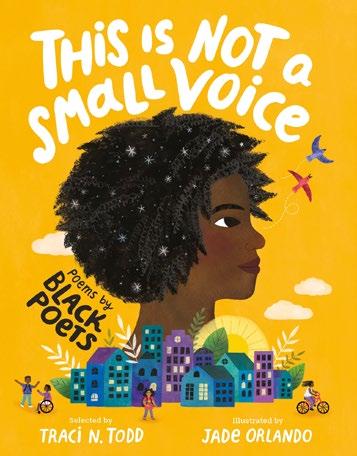




Lost and Found Jigsaw Book by
Oliver Jeffers
This charming interactive jigsaw book features Oliver Jeffers’ beloved classic Lost and Found. The heartwarming story of a boy who discovers a penguin at his door and sets out on an unforgettable adventure to help it find its way home is accompanied by six beautifully illustrated and easy-to-assemble twelve-piece puzzles. Ideal for little hands and curious minds, this clever combination of story and play will provide hours of festive fun this Christmas and beyond.
The Night Creatures: Firefly by Robert Macfarlane & Luke
Adam Hawker
This breathtaking hardback gift edition is the first in a new trilogy from two of the UK’s most celebrated creators. Written in lyrical verse by Robert Macfarlane, alongside Luke Adam Hawker’s exquisite etched illustrations, Firefly tells the story of a child who discovers a meadow glowing with fireflies - ‘fallen constellations’ that bring hope and wonder to the darkest nights. With its cloth binding and copper-foiled cover, this stunning book is as beautiful to hold as it is to read aloud. One to captivate children and adults alike this Christmas.


A Poem for Every Question by Brian Bilston
Ages 5-8
Bursting with wit, wonder and wordplay, this hardback collection is the perfect gift for curious minds. Poet Brian Bilston answers one hundred fascinating questions, from ‘Who invented football?’ to ‘How did the ancient Egyptians make a mummy?’; each in his uniquely funny and thought-provoking style.

Every poem is paired with a lively, factpacked explainer, written with just as much humour and heart. Bright, playful illustrations by Joe Berger bring extra joy to every page.
Perfect for sharing at home or in the classroom, this is a brilliant book for inquisitive children.

Impossible Creatures: The Poisoned King by Katherine Rundell
Ages 9-12
Impossible Creatures was the standout hit of Christmas 2024 and this breathtaking sequel returns to the spellbinding world of the Archipelago. When Christopher Forrester is woken by a dragon nibbling his face, an adventure awaits - one that involves daring rescues on sphinx-back, infiltrating dragon lairs and uncovering dark plots of murder and betrayal. Alongside a brave girl with birds at her command, Christopher must face dangers greater than he ever imagined. With echoes of Tolkien and Pullman, The Poisoned King is a dazzling hardback gift for fantasy lovers, brimming with wonder, danger and unforgettable creatures.

Peter Pan by Caryl Hart & Sarah Warburton
Ages 5-8

This enchanting retelling of J. M. Barrie’s timeless classic arrives in a stunning gift edition, perfect for a new generation of readers. Award-winning author, Caryl Hart captures the magic and adventure of Neverland with warmth and energy, while Sarah Warburton’s beautiful colour illustrations make every page sparkle. Join Peter, Wendy and the Darling children as they encounter the mischievous Lost Boys, the jealous Tinker Bell and the villainous Captain Hook in an unforgettable adventure. With its foil cover and keepsake design, this striking edition makes a gorgeous Christmas gift.


Sarah Campbell is co-founder of Parrot Street Book Club, an online children’s bookshop offering a handpicked collection of high-quality children’s chapter books, plus an award-winning monthly book subscription for 5 to 14 year-olds. Find out more at www.parrotstreet.com
By David Atherton
Baking with your children can be one of the most rewarding (and often hilarious) activities you can do together but knowing how to tailor the experience by age can make all the difference between sweet success and a kitchen meltdown.
Toddlers & pre-schoolers (ages 2–4)
At this age, with attention spans short and curiosity high, little ones may not stick with the recipe from start to finish and that’s okay. Set up a little play table nearby so they can dip in and out of the action. Often they’ll see you enjoying the process and want to get stuck in again. Give them simple jobs like stirring, pouring pre-measured ingredients or decorating. Most importantly, let them play - a few floury fingerprints are all part of the fun.
Young bakers (ages 5–7)
This is the perfect age to get kids excited about being in the kitchen. My top tip? Give them their own baking kit. A personalised apron, a mini rolling pin or wooden spoon, even a paper chef’s hat; it helps them feel part of the process and encourages independence. Children in this age group thrive on praise and love having a job to do, so assign them a role: ‘flour scooper,’ ‘egg cracker’ or ‘official taste tester.’ Supervise closely but let them take pride in what they’re contributing.
Independent explorers (ages 8–11+)
Slightly older kids can often manage a lot of the recipe themselves with a bit of guidance. Step-by-step cookbooks with pictures are brilliant - they support children who may still be growing in reading confidence but want to feel in control. Let them choose the recipe, measure out ingredients and even adapt or annotate their cookbook with ideas of their own. Ownership over the process boosts confidence and creativity. There may be more mess but it’s all part of the learning (and the memories).
General tips for all ages
One universal truth when baking with kids: there will be mess. Lots of it. But that mess is creativity in action. Whether it’s icing on the walls or flour in the hair, these are signs of a fun, hands-on learning experience. Baking is also a fantastic way to

This fun recipe is baked in the shape of a Christmas cracker – a real showstopper for the table!
Since it’s Christmas, if you have leftover parsnips, you can use these instead of carrot for a gentle nutty flavour and to keep the cake soft, moist and naturally sweet. Root vegetables have been used in cakes for generations, especially when sugar and butter were scarce; they remain a brilliant way to add flavour and texture.
Visit www.bit.ly/CrackerCake or use QR code for the recipe.

encourage fussy eaters to try new things - if they’ve made it, they’re more likely to taste it.
Most importantly, don’t aim for perfection. Aim for connection, curiosity and confidence. Your bake may lean a little to one side but your child will remember the joy of making it forever.
Three top tips for healthier bakes
Add a little wholemeal goodness. Swap ten to fifteen percent of your white flour for wholemeal. It barely changes the texture but gives you a nice fibre boost and adds more depth to the flavour.
Embrace dried fruits. Dried fruits like apricots, raisins or dates bring natural sweetness as well as added nutrients. Blend into cookie dough or sprinkle into muffins for a healthier treat.
Mix up your root veg. Love carrot cake? Try the same recipe with grated parsnip, beetroot, sweet potato or swede. It’s a fun way to explore flavours and sneak in a few extra vegetables.
David Atherton is the 2019 winner of The Great British Bake Off and author of My First Christmas Cook Book, part of the My First Cook Book series, available online and from all good book shops. © Walker Books 2023. Text © 2023 Nomadbaker Limited. Illustrations below © 2023 Katie Cottle. All rights reserved.



At Christmas time, there are plenty of grown-up drinks like wine, eggnog and sherry but it’s nice to have something special for children too. This colourful, fruity drink is made just for kids, so they can feel included in the celebrations. Using cranberries and oranges, festive fruits with bold flavours, it’s refreshing but also bright and cheerful. Perfect for a Christmas party or a cosy family gathering, this slushy brings a splash of fun to family time.
Visit www.bit.ly/ChristmasSlushy or use QR code for the recipe.

By Cheney Hamilton
As the job market continues to evolve, future-proofing your career has become increasingly important. For parents, this involves embracing the advancements in artificial intelligence (AI) and flexible work models.
The role of AI in the workplace
AI is transforming numerous industries by automating routine tasks, enhancing decision-making processes and enabling new levels of efficiency. Key areas where AI is making a significant impact include:
Automation: AI systems can handle repetitive tasks, allowing employees to focus on more complex and creative activities. Data analysis: AI can process large datasets quickly and provide actionable insights.
Personalisation: AI technologies enable personalised customer experiences in sectors like retail and healthcare.
Embracing AI for career advancement
There are a variety of ways in which you can develop AI skills.
Online courses and certifications
Numerous online platforms offer courses and certifications in AI and related fields. Some recommended platforms include: Coursera (www.coursera.org) offers courses from top universities and companies, including AI for Everyone by Andrew Ng. edX (www.edX.org) provides courses from institutions like MIT and Harvard, such as the Professional Certificate in AI. Udacity (www.udacity.org) features nano degree programs in AI and machine learning, designed in collaboration with industry leaders.

Flexible work models, such as remote, flexible hours and freelance roles are becoming more prevalent and embracing these may help you future-proof your career. These work arrangements allow parents to balance professional and personal responsibilities; many also report higher productivity levels when working in environments of their own choice. Reduced commuting costs can lead to significant savings too.
Take a look at job search platforms such as FlexJobs (www.flexjobs.com), a platform dedicated to remote, part-time and freelance jobs and Remote.co (www.remote.co) which lists remote job opportunities across various industries. We Work Remotely (www.weworkremotely.com) focuses on remote positions in tech, marketing and customer service. Freelancing platforms can also be useful. Upwork (www.upwork.com) connects freelancers with clients for short-term and long-term projects; Fiverr (www.fiverr.com) allows freelancers to offer services at various price points and Freelancer (www.freelancer.com) is a platform for finding freelance work in diverse fields.

Hands-on experience
Projects: engage in AI-related projects to apply your knowledge practically. Websites like Kaggle (www.kaggle.com) offer datasets and competitions to practise AI skills.
Internships: seek internships or volunteer opportunities to gain real-world experience in AI.
Stay updated with AI trends
Industry news and publications
Tech news websites: follow websites like TechCrunch (www.techcrunch.com), Wired (www.wired.com) and MIT Technology Review (www.technologyreview.com) for the latest AI developments.
Research papers: read research papers and journals to understand the latest advancements in AI technology.
Networking and professional groups
LinkedIn groups: join AI-focused LinkedIn groups to network with professionals and stay informed about industry trends. Conferences and webinars: attend industry conferences and webinars to learn from experts and expand your network.
Tailor your applications
Highlight technical skills: emphasise any skills related to AI, data analysis or digital tools.
Customise resumés: tailor your CV and cover letter for each application, highlighting relevant experience and achievements. Portfolio: create a portfolio showcasing your work, particularly projects related to AI.
Cheney Hamilton is the proprietor of flexible job search site, Findyourflex (www.findyourflex.co.uk) and Mummy Jobs (www.mummyjobs.co.uk).







By Ann Magalhaes
We’ve all been there: exhausted, deflated, defeated, done! Your child spilled the glass of milk that you told them was too full. They didn’t listen. They walked straight into the living room with the new carpet. They tripped over the toy on the floor and you watched, in slow motion, as the milk flew out of the glass and soaked the carpet.
And, just like that, your words start flying. ‘What were you thinking? I told you not to. You never listen. Why can’t you just do what you’re told?’ Each sentence more exasperated, more annoyed, until you hear yourself doing what you swore you’d never do and you’re shouting: ‘GO TO YOUR ROOM. NOW!’
Maybe for you it’s not spilled milk or not being listened to. Maybe it’s the refusal to eat vegetables, go to a swimming lesson or dress and get out the door on time.
We all have triggers and our children can seem to push buttons we never knew we had: pressure points that lay dormant until our kids came along. Suddenly things bother us like they never bothered us before.
Why does this happen and what can we do to hang onto our heads? Great questions. The answers are pretty simple in theory but harder in practice.
It starts with noticing which behaviours speed you from zero to sixty on the mad-o-meter or things that make you say ‘you always forget’ or ‘you never listen’. These are your ‘buttons.’ They’re very personal and most of us have more than one.
The behaviour will leave you feeling angry, frustrated, overwhelmed, unheard, ignored, invisible or ineffective; not the joyous feelings you thought would come with parenthood. But these feelings don’t just come out of nowhere.
In a microsecond, your eyes have spotted something or your ears have heard something and your brain has made a judgement call about it. Something is wrong. Someone is hurt. Something is broken. I’m in trouble … and that thought quickly triggers the negative feelings and the big reaction. You’re much less likely to lose it with your kids when you’re well-rested, wellnourished and having a good day. But things happen and in a split second your brain goes on autopilot.
Instead of seeing your child’s mistaken behaviour and overreacting, notice the behaviour as it starts to happen, hit your pause button, breathe deeply, exhale slowly and recognise and accept what’s happening for you.
Breathe again and make a conscious choice to stay calmer for the benefit of your child. It’s the speed of our reaction that makes us feel there’s nothing we can do. Yet we do have a fleeting chance to choose a different reaction. And it’s really important we try to do this.
That was the simpler bit. Now the tricky part comes into play: being able to hit your pause button. The next time you see the behaviour starting to happen, take a couple of deep breaths, notice what’s going on within yourself, pause and say to yourself: ‘I have a choice here. I can totally lose it or I can remind myself that my child is a child, he’s learning, she’s trying her best, he made a mistake…’ and then you’re in the position to calmly show them how you want them to behave.
Because rarely does shouting at a child make them stop and think: ‘Wow, yes, that’s a great idea mum. I’ll make sure from now on I will only drink milk in the kitchen.’ If you want your child to learn the habit of drinking their milk in the kitchen and all the rest, your calm, steady response is going to get them there faster.
If you want to know how to build those habits, stay tuned for a future piece about setting yourself up for success and fostering independence in your child.
Ann Magalhaes is co-founder of The Parent Team (www.theparent.team), parenting educators offering classes, workshops and private sessions, teaching evidence-based parenting skills and offering parents practical, effective support.
Sign up at www.familiesmag.co.uk/go

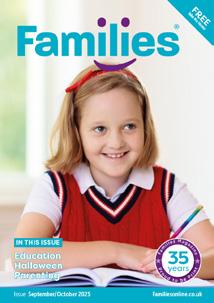

When we’re tired, hungry and especially when our selfesteem is low, it’s much harder to deal with things. High stress levels make us less sensitive to our children’s needs and less able to keep it together when our buttons get pushed. Breathe deeply - it’s your best parenting tool.
Try for a good night’s sleep, make time to do something for you and remind yourself that you are doing your best. Also reach out for support because you are not alone on your parenting journey.
By Adam Christing
Parenting can be wonderful, messy and exhaustingsometimes all before breakfast. With school trips, bedtime battles and endless laundry, it can feel like there’s little time left to breathe. But there’s one tool that makes family life lighter and more connected: laughter.
We hunger for humour. Babies laugh before they can talk! Smiles bond us, lift our spirits and help us lead our families with heart. Here are five simple humour tactics - or ‘laugh languages’ - that make emotional connection easier, even on the rough parenting days.
Surprise!
Delight your kids with the power of the unexpected. Swap breakfast for dinner or announce a picnic in the living room. It is about breaking routines and sparking joy. It’s okay to make your children SAD when it means you Surprise And Delight them.
Poke
The best way to start is by poking fun at yourself (beat the rush). Turn your own flops into funny stories and show them how you have failed forward. Sometimes intimacy really does mean ‘into. me. see.’
In-jokes
Discover the laughter in shared experiences. Nothing says closeness like a joke only your family gets. Create ‘us’ moments: a nickname only you use, a secret phrase for extra biscuits or a running joke about Dad’s dance moves. Children light up when you repeat their funniest lines - it makes them feel like stars.

Parenting is unpredictable. Just when you think you have it sorted, someone paints the dog or hides socks in the freezer. The truth is, like your kids, you will make mistakes. Laughing at yourself turns those blunders into bonding moments.
Try narrating your chaos like a sports commentator: ‘Mum drops the cereal. Dad dives for the spoon. And yes, it’s another kitchen catastrophe!’ Lightness lowers the pressure and teaches kids that mistakes are not disasters.
And don’t forget, your children are unintentionally hilarious. Seven-year-old Ethan once declared: ‘I’m going to marry mum when I grow up because she already knows how to make spaghetti.’ Repeating their one-liners shows you are listening and celebrates their quirky brilliance.
When you laugh instead of snap, kids see resilience in action. They learn that life does not have to be perfect to be joyful. Sometimes the messiest moments make the best family memories.

Wordplay
Use witty language and clever banter. Kids love playful twists on words and ‘dad jokes.’ Make up rhymes, invent silly names or puns: ‘I lost my job at the Orange Juice factory... I couldn’t concentrate.’ The Princess Bride became a family classic because it is more about wordplay than swordplay. Sometimes, just one perfectly timed word gets the biggest laugh. ‘Inconceivable!’
Amplify
Exaggerate stories and situations for impact. Don’t just tell a funny story, re-live it. Ham it up with expressions. Your face is a projector screen!
Laughter builds connection, eases stress and creates memories that last. Your kids may forget what you cooked for dinner but they will long remember when you helped them feel what’s funny.
Adam Christing is a father of four. He is a speaker and the author of The Laughter Factor: The 5 Humor Tactics to Link, Lift and Lead. You can discover your ‘laugh language’ by visiting www.thelaughterfactor.com

Families who laugh together grow closer and the best part is, you do not need to become a professional clown. It is the little moments that stick.
Create inside jokes. Invent a silly nickname, a secret handshake or a nonsense phrase that always gets a giggle. These small traditions can become part of your family folklore. Celebrate the ridiculous. Wear your socks on your hands, have an ‘opposite dinner’ where kids serve the parents or let everyone invent their own dessert toppings.
Do not underestimate the comedy gold from your kids. Sixyear-old Chloe once announced: ‘I want to be a superhero. And my superpower will be eating all the sweets.’ Repeating gems like these keeps laughter alive and makes children feel heard.
Research shows humour strengthens family connections and builds resilience. And on the hard days, during homework battles or bedtime protests, a shared laugh reminds everyone that you are on the same team.
By Tamsin Ryan
Throwing kids’ parties can be challenging as there are often so many elements. These tips from party experts will help you ensure your child’s celebration is a success, without you tearing out your hair.

BOOK EARLY: Don’t leave it until the week before and hope everything will be available when you want it. Most bookings at our attraction are made six weeks ahead of the date. Booking early ensures you can get exactly what you want. Oh and relax – the party will be fine! (Rock It Inflatables)
OUTSIDE PARTIES: If you are hosting a party outside, a gazebo can be really useful to offer shade on a hot day and a drier space for activities on drizzly days. If it looks like it is going to be sunny, ask parents to apply suncream before they drop the children off at the party.
(Rachel, Buttercup Learning)
ADMIN: Pay your balances before the party. It will give you one less thing to stress over when you’re already trying to co-ordinate the chaotic end-of-party cake cutting, party bag distribution and thanking guests.
(Heather, Rainbow Tiger Face Painting)

CUTTING THE CAKE: It takes a lot longer than you think to cut the birthday cake! Blow out the candles early so you have time to cut and wrap for the party bags. I’ve seen too many frantic parents trying to get it done before the kids leave. (Danielle, Red Beau)
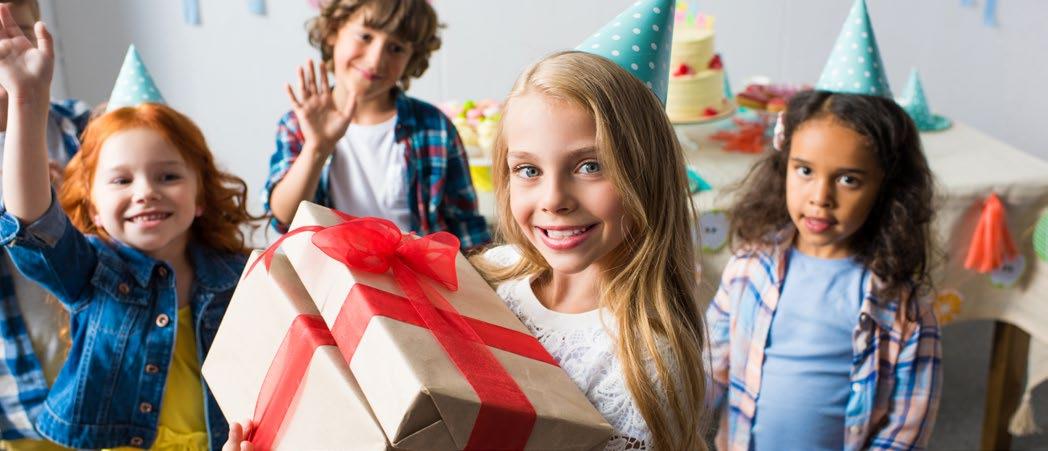
BIGGER ISN’T ALWAYS BETTER: Small parties are fine! Kids will have just as much fun with ten friends as they do with thirty.

PLAN AHEAD: For late August/early September birthdays, send out a headsup before schools break up for summer, so that parents can add the date to their diaries. Follow up with an ‘official’ invitation a couple weeks before.
(Ashleigh, Photo Party London)
JOINT PARTIES: A great way to share the workload and the costs. You can even get a joint birthday cake!
(Adrienne, Oh Crumbs Cake Couture)
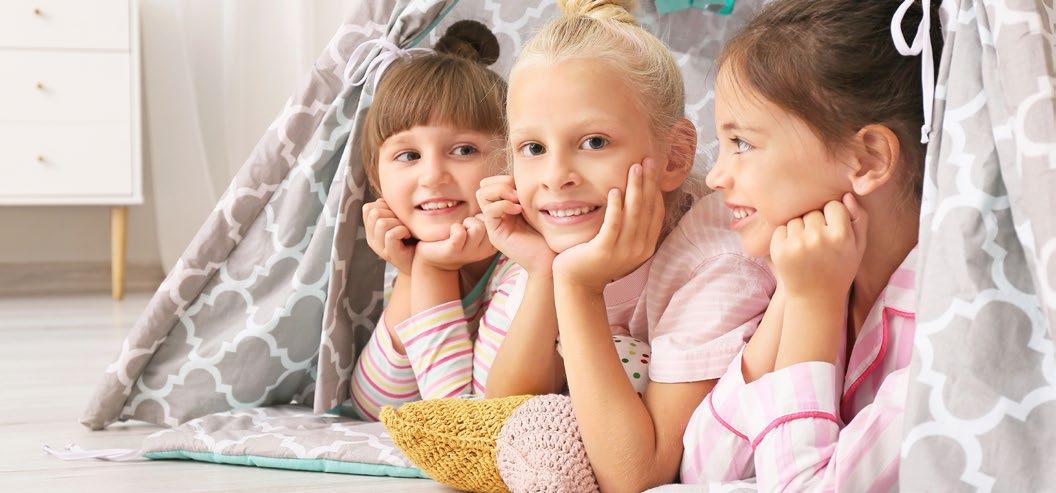
GET THE SET-UP RIGHT:
Following my sleepovers, most parents tell me just how much the kids enjoyed just being inside the tent itself. So if you’ve looked at sleepovers thinking they might be boring, I’d think again. My tip? Make sure the tents point to the TV so they can have a movie night inside their tents.
(Sarah, Just Jim Jams)
SUPPLIERS: Check that entertainment services are compatible before you book multiple suppliers. For example, if you are going to book a bouncy castle, check that they allow kids to bounce if they have face paint on, before you book the face painter too!
(Heather, Rainbow Tiger Face Painting)
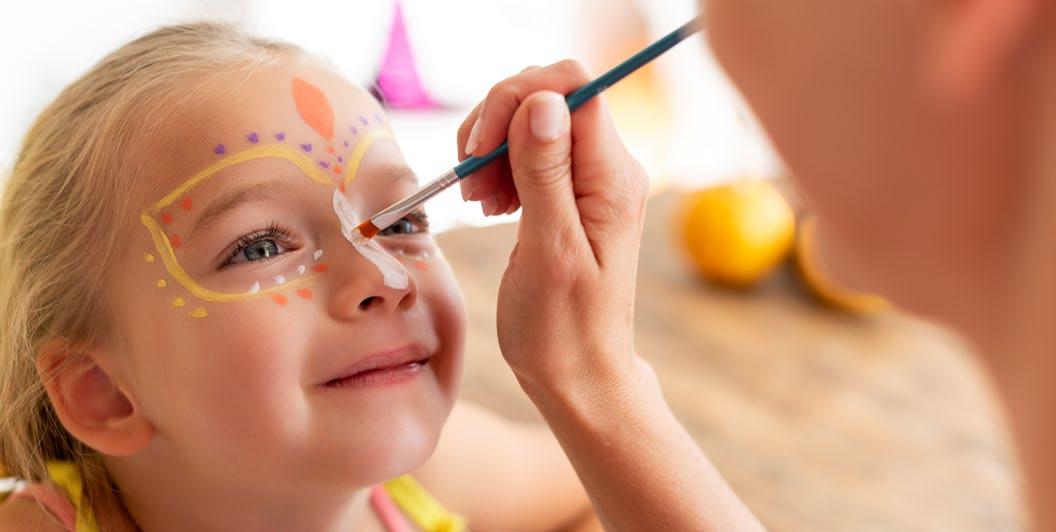
LESS IS MORE: Keep it simple. For a two hour party, plan for one or two activities and some food. Anything more will likely be ignored or wasted. (Holmes Chapel Waste-Free Party)
KEEP IT SIMPLE: Never underestimate the value of simple things like colouring in and games like Musical Statues and Pass the Parcel. Sometimes it’s easy to over-complicate parties but I’ve realised that children really love the classics just as much as we did when we were younger! (Tring Pamper Party)